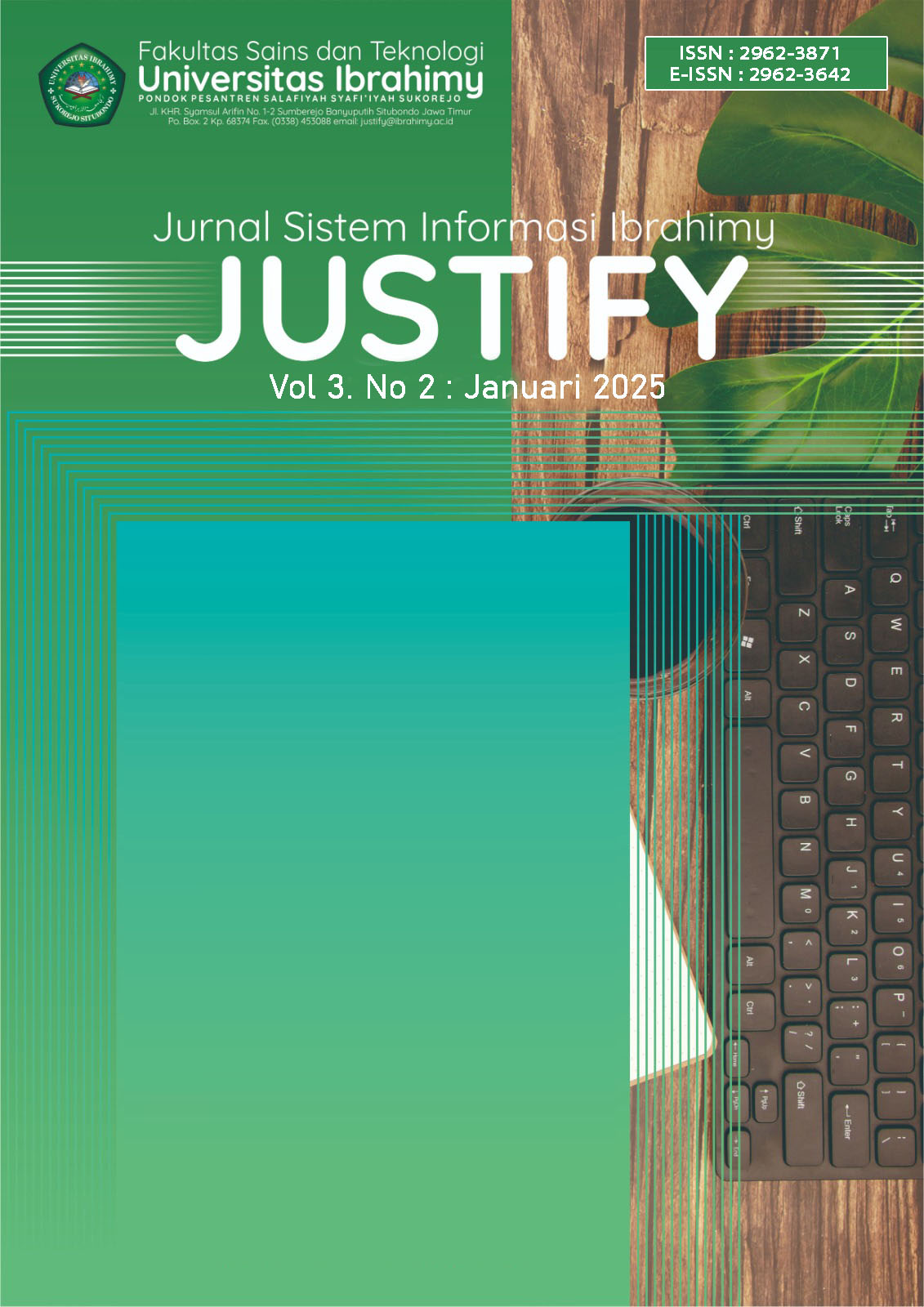PREDIKSI CHURN PELANGGAN INDUSTRI TELEKOMUNIKASI MENGGUNAKAN METODE ARTIFICIAL NEURAL NETWORK BERBASIS STREAMLIT
Abstract
Telecommunications companies face a major challenge in retaining customers as the cost of acquiring new customers is much higher than retaining existing customers. Customer churn, or the tendency of customers to stop using a service, can cause significant losses to the company. Customer churn prediction using Machine Learning techniques is crucial to address this issue. This research uses a Streamlit-based Artificial Neural Network (ANN) algorithm to predict customer churn in the telecommunications industry. Inspired by how the human nervous system works, ANN can learn complex customer data patterns, such as tenure, contract type, and monthly fee, resulting in more accurate predictions. Based on the research results, the Streamlit-based ANN method achieved 98% accuracy, higher than the previous method. However, the high accuracy indicates the potential for overfitting, so further testing with larger and more diverse datasets is needed to ensure better generalization. This model is expected to help telecommunication companies identify potentially churning customers and improve customer retention strategies effectively.
References
M. A. Iskandar and U. Latifa, “Website Prediksi Customer Churn Untuk Mempertahankan Pelanggan Pada Perusahaan Telekomunikasi,” JATI (Jurnal Mahasiswa Teknik Informatika), vol. 7, no. 2, pp. 1308–1316, 2023.
Kaharudin, M. G. Pradana, and Kusrini, “PREDIKSI CUSTOMER CHURN PERUSAHAAN TELEKOMUNIKASI MENGGUNAKAN NAÏVE BAYES DAN K-NEAREST NEIGHBOR ,” JURNAL INFORMASI INTERAKTIF, vol. 4, no. 3, pp. 165–171, Sep. 2019.
A. Wicaksono, A. Anita, and T. N. Padilah, “Uji Performa Teknik Klasifikasi untuk Memprediksi Customer Churn,” Bianglala Informatika, vol. 9, no. 1, pp. 37–45, 2021.
M. Arifin, “IG-KNN untuk prediksi customer churn telekomunikasi,” Simetris: Jurnal Teknik Mesin, Elektro dan Ilmu Komputer, vol. 6, no. 1, pp. 1–10, 2015.
S. D. Damanik and M. I. Jambak, “Klasifikasi Customer Churn pada Telekomunikasi Industri Untuk Retensi Pelanggan Menggunakan Algoritma C4. 5,” KLIK: Kajian Ilmiah Informatika dan Komputer, vol. 3, no. 6, pp. 1303–1309, 2023.
A. M. N. Aziz, A. Mauludin, R. D. Hafiz, V. A. Sintalana, and A. A. Rismayadi, “Prediksi Customer Churn Menggunakan Logistic Regression dan Decission Tree,” eProsiding Teknik Informatika (PROTEKTIF), vol. 4, no. 1, pp. 11–19, 2023.
I. M. Latief, A. Subekti, and W. Gata, “Prediksi Tingkat Pelanggan Churn Pada Perusahaan Telekomunikasi Dengan Algoritma Adaboost,” Jurnal Informatika, vol. 21, no. 1, pp. 34–43, 2021.
G. Thiodorus, A. Prasetia, L. A. Ardhani, and N. Yudistira, “Klasifikasi citra makanan/non makanan menggunakan metode Transfer Learning dengan model Residual Network,” Teknologi: Jurnal Ilmiah Sistem Informasi, vol. 11, no. 2, pp. 74–83, 2021.
W. Hastomo, N. Aini, A. S. B. Karno, and L. M. R. Rere, “Metode Pembelajaran Mesin untuk Memprediksi Emisi Manure Management,” Jurnal Nasional Teknik Elektro dan Teknologi Informasi| Vol, vol. 11, no. 2, 2022.
W. Husada, D. Prayogo, C. F. Thamrin, and R. Herdjijono, “Optimasi Desain Penampang Struktur Rangka Batang Baja Berbasis Reliabilitas Menggunakan Symbiotic Organisms Search dan Artificial Neural Network,” Petra Christian University, 2021.
S. Katoch, V. Singh, and U. S. Tiwary, “Indian Sign Language recognition system using SURF with SVM and CNN,” Array, vol. 14, p. 100141, 2022.
X. Xiong, S. Hu, D. Sun, S. Hao, H. Li, and G. Lin, “Detection of false data injection attack in power information physical system based on SVM–GAB algorithm,” Energy Reports, vol. 8, pp. 1156–1164, 2022.
A. Luque, A. Carrasco, A. Mart’in, and A. de Las Heras, “The impact of class imbalance in classification performance metrics based on the binary confusion matrix,” Pattern Recognit, vol. 91, pp. 216–231, 2019.
Copyright (c) 2024 Nilawati Ningsih, Nur Aida Saskiya Iskandar, Shofiatur Rizqiyah, Sudriyanto Sudriyanto

This work is licensed under a Creative Commons Attribution-NonCommercial 4.0 International License.






